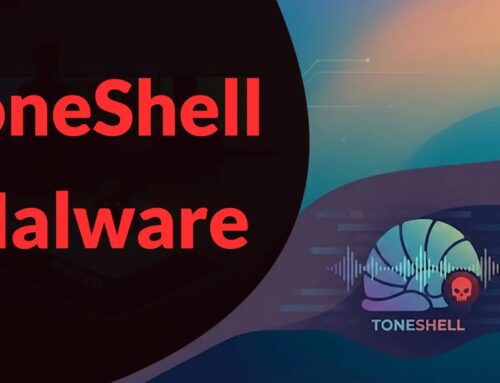
Threat Actors Abuse Adtech Companies to Target Users With Malicious Ads
The Shifting Sands of Cybercrime: When Adtech Becomes an Attack Vector
The digital advertising ecosystem, a complex and often opaque network designed to connect advertisers with audiences, has morphed into a fertile hunting ground for cybercriminals. No longer content with merely exploiting vulnerabilities in legitimate platforms, threat actors are now establishing themselves as the platforms, weaving a sophisticated web of deception that leverages the inherent complexity and fragmentation of the adtech industry to deliver malicious payloads. This insidious shift represents a significant escalation in tactics, demanding a deeper understanding and proactive defense from organizations and users alike.
Threat Actors Evolve Beyond Traditional Exploits
The traditional model of cyberattacks often involves threat actors identifying and exploiting security flaws within existing legitimate infrastructure. However, the landscape is evolving. As revealed in a recent report by Cyber Security News, a concerning trend has emerged: threat actors are now operating as advertising technology companies themselves. This means they are not just abusing platforms but creating their own, complete with seemingly legitimate ad network infrastructures. Think of it not as a thief breaking into a house, but as a thief building a fake house next door to lure in unsuspecting visitors. This allows for greater control over the attack chain, from ad impression to malware delivery, making detection and attribution significantly more challenging.
The Anatomy of Adtech Abuse: A New Modus Operandi
The fragmentation and rapid transactions inherent in the digital advertising supply chain provide ample opportunities for malicious actors. Here’s how these sophisticated attacks typically unfold:
- Impersonation and Infrastructure Creation: Threat actors establish fake ad exchanges, demand-side platforms (DSPs), or supply-side platforms (SSPs) that mimic legitimate entities. This often involves registering domains, setting up servers, and even creating plausible website interfaces.
- Integration into the Ecosystem: These fake entities then integrate into the broader adtech ecosystem, often through programmatic advertising channels. This is where the sheer volume of transactions and automated bidding create blind spots where malicious actors can hide.
- Malicious Ad Distribution: Once integrated, the threat actors bid on ad impressions, just like legitimate advertisers. However, their ads either contain malicious code (malvertising) or redirect users to malicious landing pages designed for phishing, malware downloads, or credential harvesting.
- Evasion Techniques: To avoid detection by security vendors and ad fraud protection services, these malicious campaigns often employ sophisticated evasion techniques. These can include geo-fencing (only showing malicious ads in specific regions), time-based delivery, or device fingerprinting to target vulnerable systems.
The Impact: From Data Breaches to Enterprise Compromise
The consequences of these adtech-based attacks are far-reaching. Individuals can fall victim to data theft, ransomware, or other forms of malware. For organizations, the implications are even more severe:
- Brand Reputational Damage: If a company’s ads are inadvertently served alongside malicious content, or if their users fall victim to attacks originating from their ad partners, their brand reputation can suffer significantly.
- Supply Chain Compromise: For organizations that rely heavily on digital advertising for outreach, a compromise within the adtech supply chain can lead to a broader enterprise-level breach.
- Financial Loss: Beyond the direct costs of remediating an attack, organizations can incur financial losses from wasted ad spend on fraudulent impressions or legal fees stemming from data breaches.
Remediation Actions: Fortifying Your Defenses
Combating this evolving threat requires a multi-faceted approach. Both individuals and organizations must implement robust security measures and exercise vigilance.
- For Individuals:
- Ad Blockers: Employ reputable ad-blocking software to prevent malicious ads from loading.
- Browser Security: Keep browsers updated, enable security features like pop-up blockers, and exercise caution when clicking on unfamiliar links.
- Antivirus/Anti-Malware: Maintain up-to-date antivirus and anti-malware software on all devices.
- Zero Trust Mentality: Treat every unsolicited ad or pop-up with suspicion.
- For Organizations (Advertisers and Publishers):
- Vendor Due Diligence: Thoroughly vet all adtech partners. Demand transparency regarding their security practices and supply chain.
- Traffic Quality Monitoring: Implement advanced traffic quality monitoring solutions to detect and block fraudulent impressions and malicious ad activity.
- Malvertising Detection: Utilize dedicated malvertising detection tools that scan ad creatives and landing pages for malicious code or redirects.
- Header Bidding Security: For publishers using header bidding, ensure all demand partners adhere to strict security protocols.
- Regular Security Audits: Conduct regular security audits of your adtech stack and associated infrastructure.
- Employee Training: Educate employees about the risks of malvertising and how to identify suspicious ad behavior.
| Tool Name | Purpose | Link |
|---|---|---|
| Brand Safety & Ad Fraud Solutions (e.g., DoubleVerify, Integral Ad Science) | Detect and prevent ad fraud, malvertising, and brand safety violations. | https://www.doubleverify.com/ https://integralads.com/ |
| Malwarebytes Browser Guard | Blocks ads, trackers, and malicious websites in real-time. | https://www.malwarebytes.com/browserguard |
| AdGuard | Comprehensive ad blocking and privacy protection solution. | https://adguard.com/en/welcome.html |
| Threat Intelligence Platforms | Provides insights into emerging threats, including malvertising campaigns and compromised domains. | (Various vendors, e.g., Mandiant, CrowdStrike) |
The Path Forward: Vigilance and Collaboration
The transformation of adtech into a cyber attack vector underscores a critical truth: no part of the digital landscape is immune to exploitation. As threat actors continue to innovate, so too must our defenses. A combination of advanced security technologies, stringent vendor vetting, continuous monitoring, and user education is paramount. The fight against sophisticated malvertising campaigns will require ongoing vigilance and close collaboration across the entire digital advertising ecosystem.





